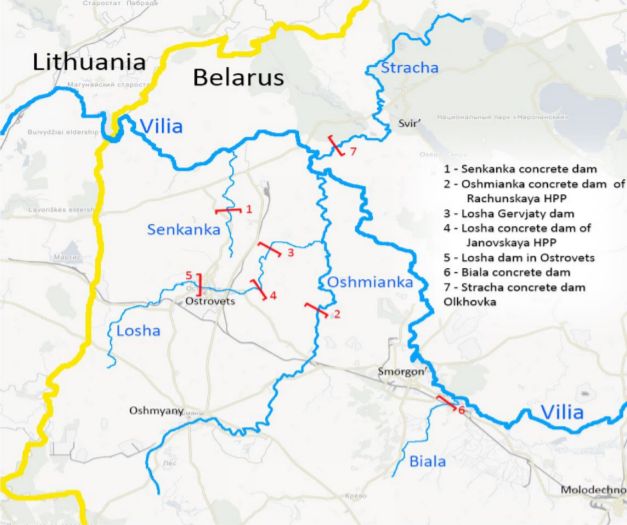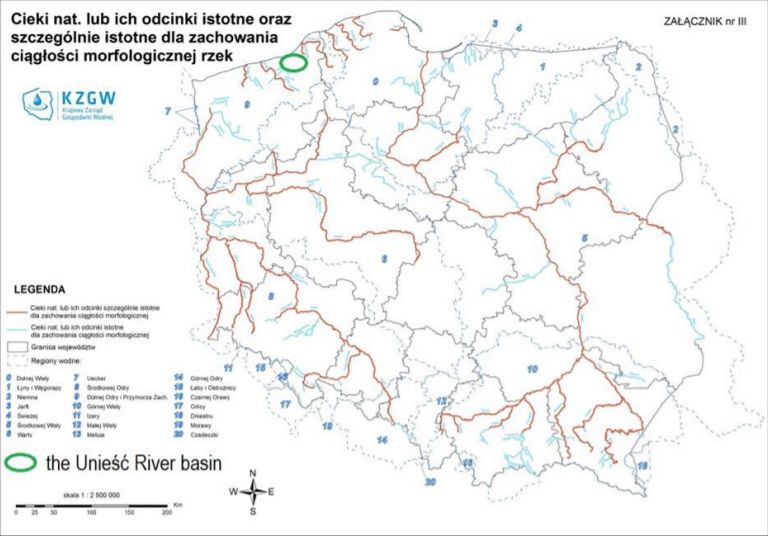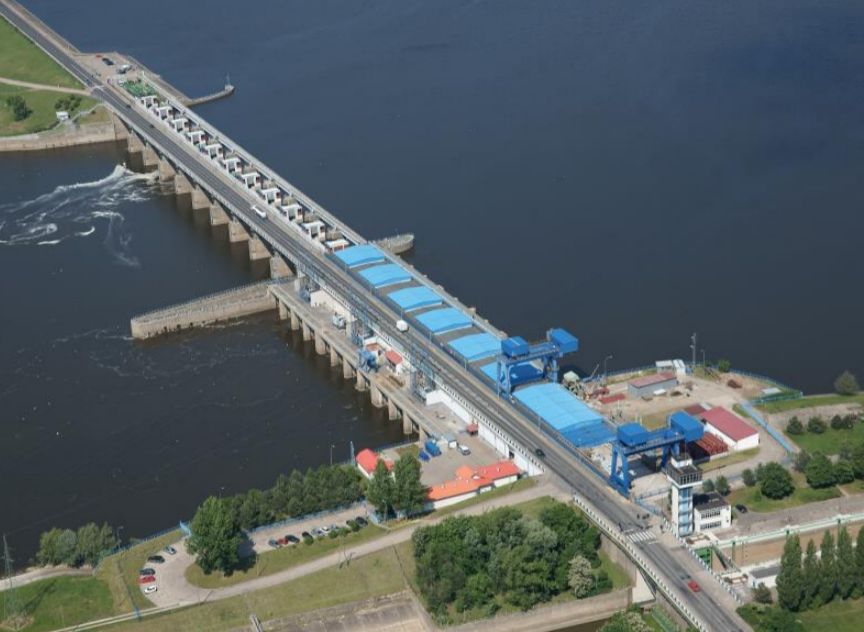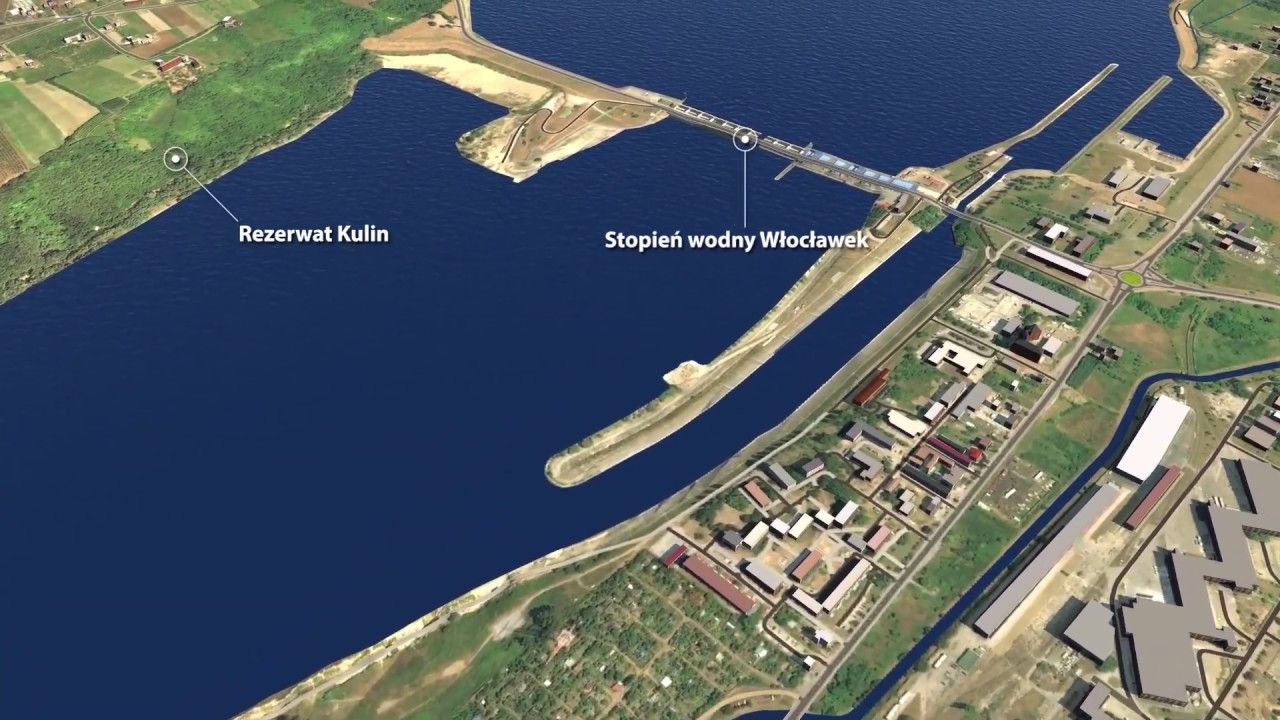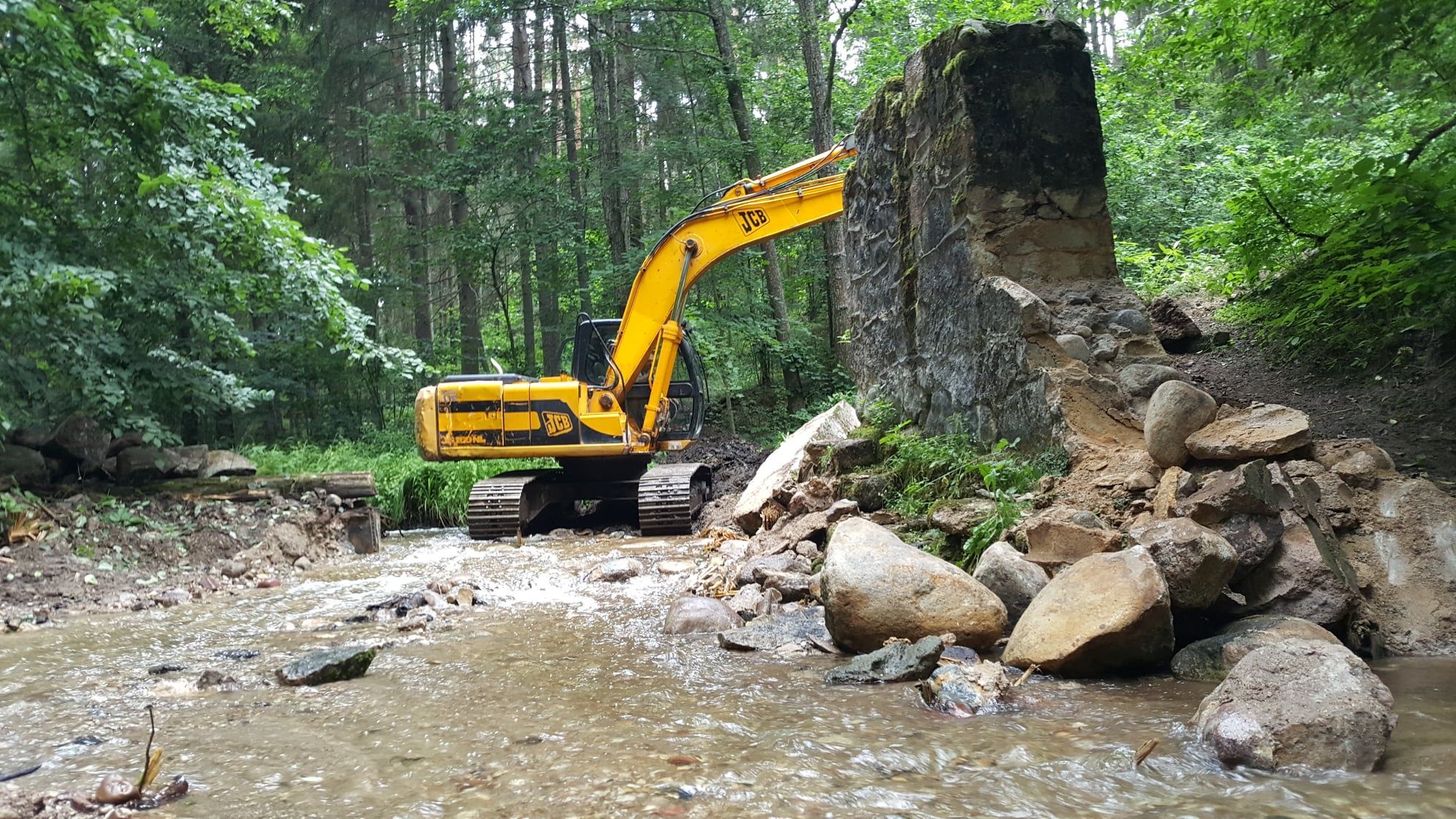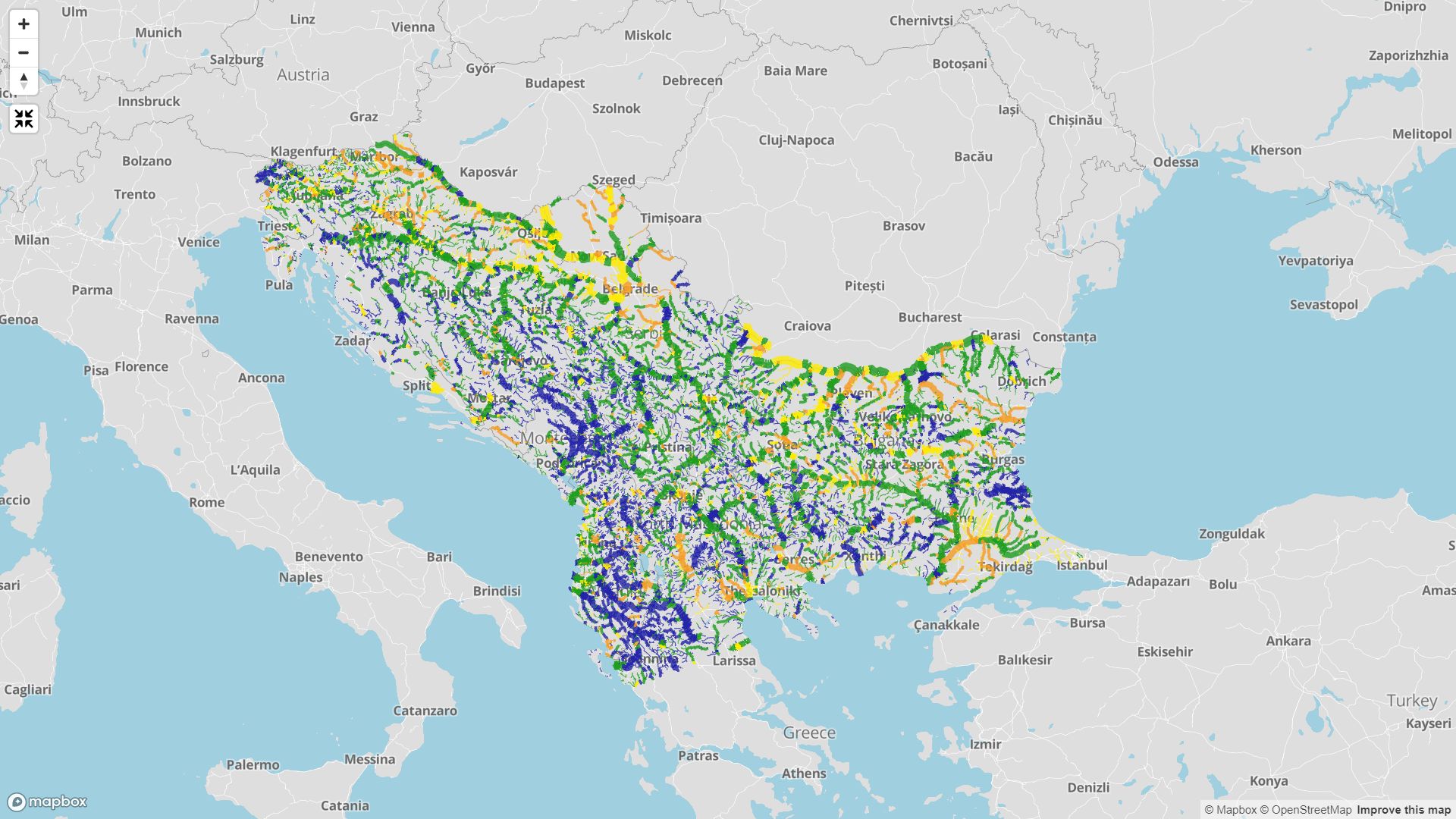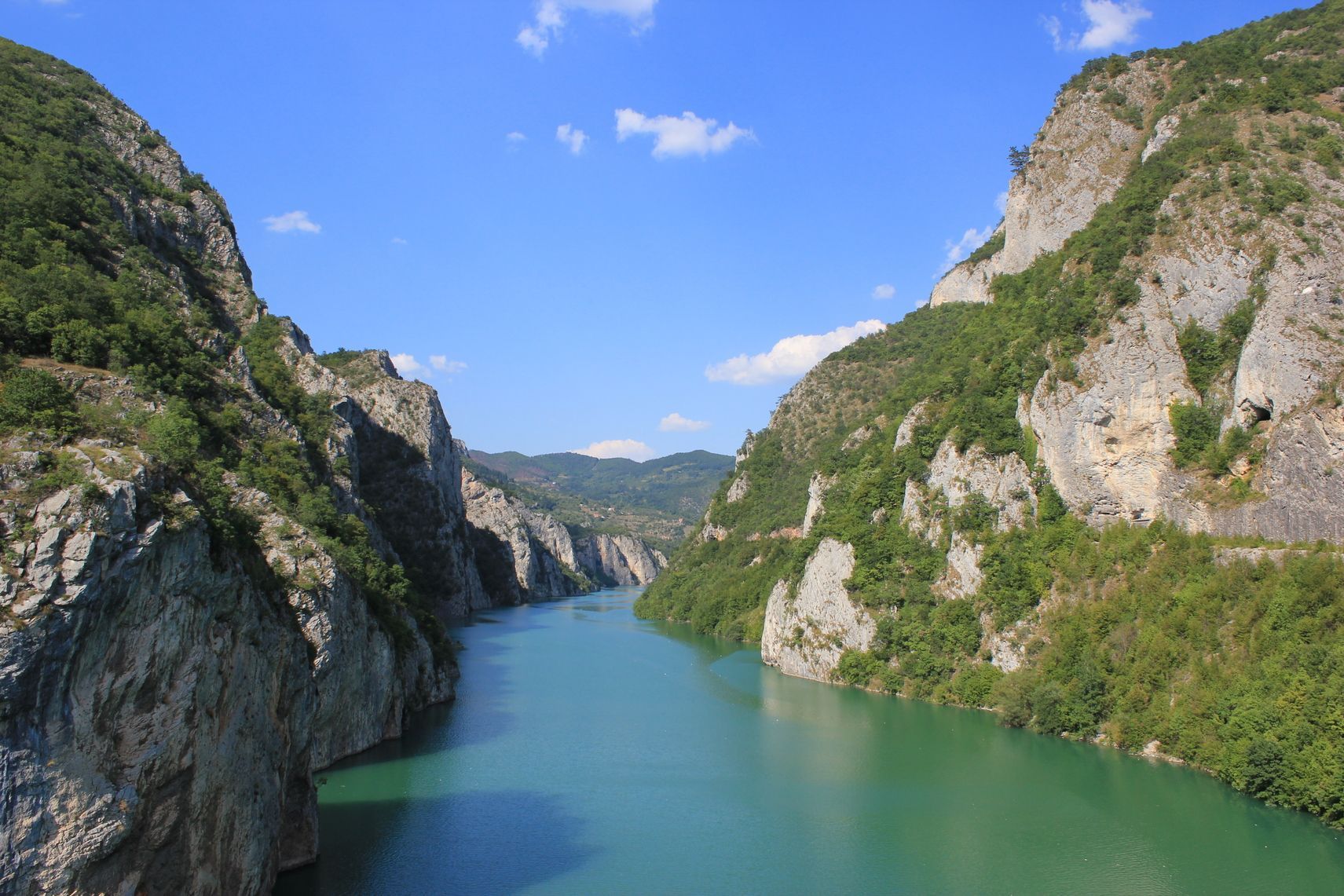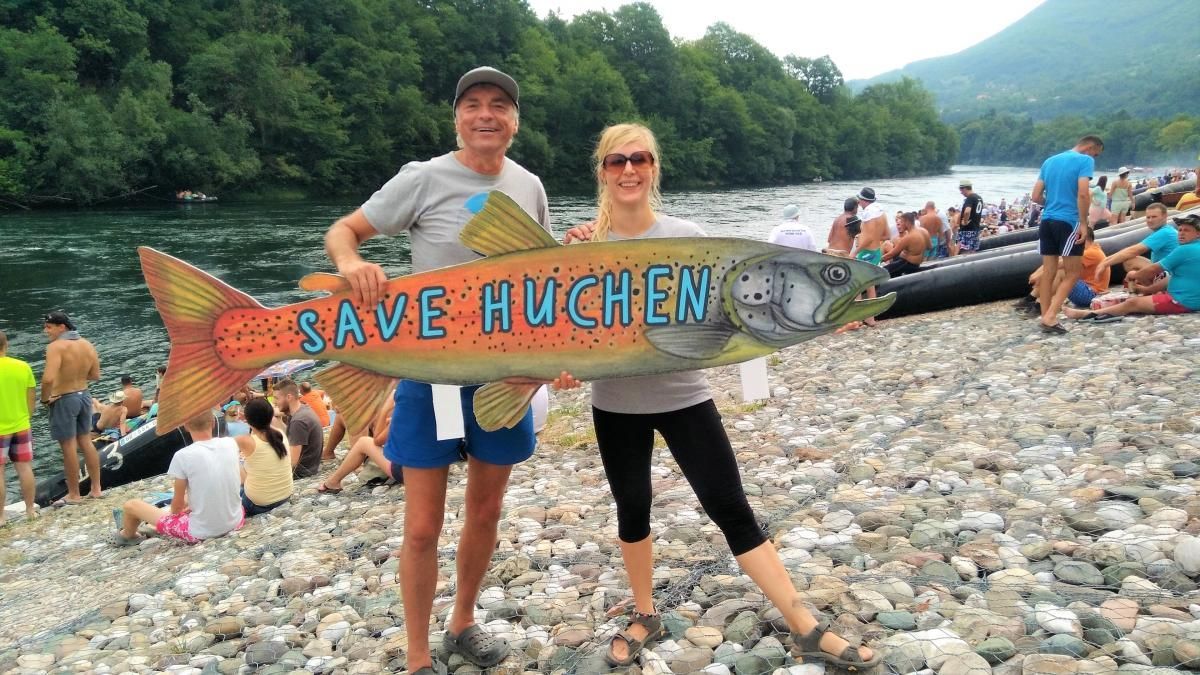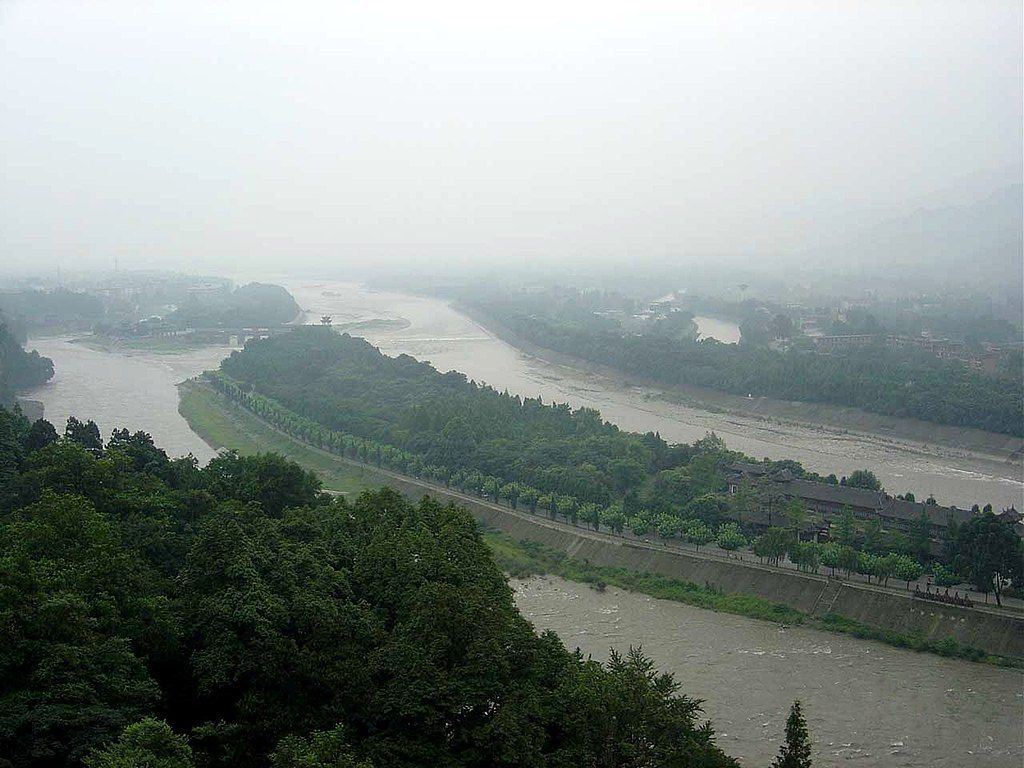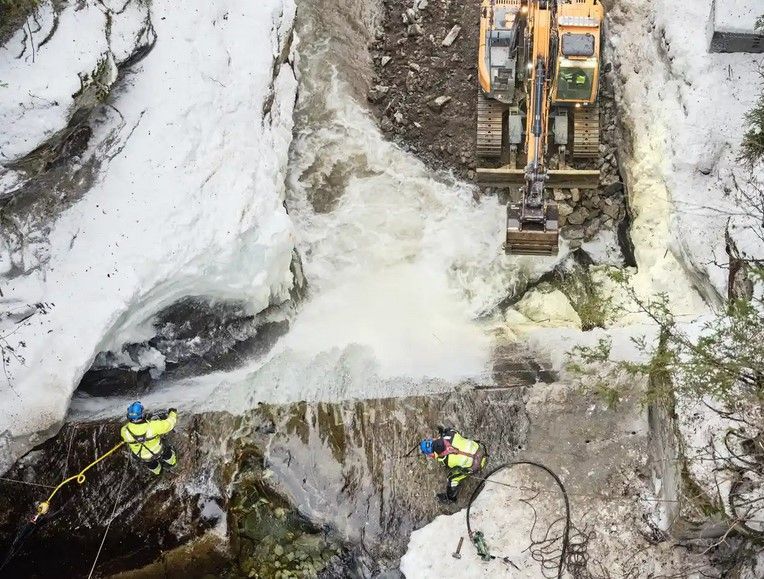International campaigns against hydropower plants: How can rivers be unshackled? Part Two
- Topic: Rivers and lakes
- Authors: Bahna
- Date: 31.01.2022, 13:17
The decision to dismantle a dam is often difficult. But once it is made, the next step is to properly drain water from the reservoir, restore the riverbed and revive fish populations. It is a huge task for ecologists and engineers. Experts from leading organisations on the rehabilitation of watercourses shared their experience on how it is carried out.
Coalition Clean Baltic
In 1990, independent NGOs throughout the Baltic Sea Region united in the Coalition Clean Baltic (CCB) to tackle environmental issues together. Many of these relate specifically to dams and other barriers on watercourses.
• In 2019, for example, the CCB launched the project “Return Salmonids to Small Baltic Rivers”. Baltic salmon populations reproduce in at least 43 river systems. In addition, there are about 1000 sea trout populations in the Baltic Sea basin. Half of them also reproduce there. 300 of these populations need urgent restoration.
Dams and barriers for hydropower, recreation or sport fishing prevent salmon from migrating freely in rivers and reaching their spawning grounds. Many of these barriers are now obsolete and no longer in use. The CCB is working to remove such barriers.
Hydropower plants in the lower parts of river systems are usually a serious problem as they prevent fish from swimming upriver. At the same time, the return on electricity generated by small hydropower plants can be many times less than the reproduction of salmonid species upstream, with its potential for sport fishing.
Poland: a national programme for surface water restoration
In March 2021, the Coalition Clean Baltic wrote an open letter to Polish Prime Minister Mateusz Morawiecki demanding a moratorium on the development, dredging and damming of rivers in the country.
Between 2016 and 2018, the number of watercourses in poor condition there increased from 90 to 99.4%. The situation with Polish rivers is now worse than anywhere else in the Baltic Sea basin and Europe. According to various estimates, there are between 16,000 and 77,000 dams and barriers on them, and many are no longer in use.
• Yet, according to a report by WWF Poland, 63% of Polish rivers in need of renovation can be restored to a good ecological condition through simple measures at relatively low cost. For about 1 billion PLN (216 million EUR), up to 90% of such rivers could be “restored”.
The main problem of Poland’s rivers is agricultural run-off and toxic substances that enter the water with precipitation. Equally seriously, they are affected by longitudinal and transverse obstructions, alignment of the channel and dredging. This is the result of decades of regulation designed to draw water away from agricultural land and protect it from flooding.
Ilona Bedroń, Vice President of the Hektary dla Natury Foundation, an expert on water management and environmental protection, led the team commissioned by the Polish State Water Management (Państwowe Gospodarstwo Wodne Wody Polskie) to develop the National Programme of Surface Water Restoration (NPSWR) in 2020.
It states that 91% of the rivers and 40% of the lakes in the country require restoration works. Final decisions on their renovation will be made during the preparation phase of the second draft of the river basin management plan. However, having analysed the draft document, Ilona Bedroń notes that the NPSWR recommendations are not fully reflected in it: only 57% of the watercourses and reservoirs are included in the programme. The measures taken for them may not be sufficient to achieve good ecological status. But the plan is likely to remain unchanged.
“Although some restoration measures are not expensive, they are not understood by the public and are not considered acceptable,” says the expert. “This requires raising people’s awareness and building trust. So far, Poles want to keep the rivers under control. This is also a problem for the water sector which is accustomed to the tradition of hydraulic engineering and land reclamation.”
• In Poland, the most controversial dam is constructed on the Vistula River. The problem with the dam of the Włocławek hydropower plant has been repeatedly discussed, as the structure has blocked the entire upper basin of the river, preventing fish migration and disrupting the dynamics of the river. Polish NGOs have proposed its removal. But controversy is brewing over what to do with the toxic sediments that have accumulated at the bottom of the reservoir.
Demolishing the dam could be the most important measure to support the local salmonid fish population, as it would then open up 2/3 of the Vistula basin to them. The modification of the existing fish-way partially solved the problem. However, the passage itself is still a huge reservoir that has turned the river into a lake.
Despite heated discussions, the government plans to further regulate the Vistula and build new dams. For example, at Siarzewo. There a cascade of dams is planned, which will create conditions for navigation and should prevent flooding in the region. However, according to studies, it is not necessary to dam the whole river to prevent floods. It is sufficient to build side dykes. Moreover, the prototyping of the project shows the opposite result: due to the dam, large amounts of water can accumulate in the lower part of the Vistula River and cause seasonal floods. Nevertheless, plans for a cascade of dams are still in place.
According to Ilona Bedroń, the best-known example of a completed dam demolition in Poland is in Wilkowice. However, it was dismantled because it was poorly designed and threatened public safety rather than because of environmental consequences.
“One cannot say that the government does not support environmental programmes, as there is, for example, the NPSWR. But at the same time there is a problem with their implementation,” she notes. “It is difficult for the authorities to shift from traditional, hydro-technical water management to sustainable management. This requires further training for officials responsible for water management and extensive education, which is the foundation for changing the existing mindset.”
According to the expert, so far the biggest impact of the restoration work has been achieved through the LIFEDrawaPL project: a large part of the Drava River and its tributaries has been restored. Policy-makers and water authorities can turn to this example when planning water quality improvements.
All the more so as recent CLEARANCE surveys have shown that the public is interested in restoring rivers and prefers natural coastal wetlands to a neat agricultural landscape.
Lithuania: Ministry of Environment programme
Lithuanian rivers are affected by two main factors: run-off from agriculture and hydromorphological changes due to the creation of canals and hydropower plants. In total, there are some 1,500 hydraulic structures. Many are abandoned and dilapidated and therefore first in line for removal.
So far, only one dam has been dismantled and 25 fish-ways have been built in Lithuania.
However, the situation is set to change dramatically soon. According to Žone Leščinskaitė, chief specialist on the restoration of free-flowing rivers in the Lithuanian Ministry of Environment, new removal projects may appear by the end of 2022.
“Dam removal is a controversial topic across Europe,” she said. “Public support for dam removal is clearly expressed only in Finland. In Lithuania, people who care about nature conservation act as supporters, too. Other groups in society are indifferent or against it. Few people are aware that there is such a problem, so the Ministry of Environment has launched a campaign to inform the public about dams. At the moment, the Lithuanian authorities support the dismantling. Measures to restore fish migration routes were included in the government programme in 2020. The main difficulty we face now is the lack of support from local municipalities since by law they are the ones that have to take care of the dams.”
• For now, the Ministry of Environment is planning to gather as much information as possible on hydraulic structures in Lithuania, to assess their damages and benefits to the population. This will result in a list of priority dams to be dismantled.
“We also want to amend several legal documents where we clarify the responsibilities of the owners of such facilities, make it compulsory to have fish-ways on certain rivers. After that, we hope that at the end of 2022, we will be able to start new dam demolition projects,” Žone notes.
In 2020, the Lietuvos gamtos fondas NGO dismantled a dam on the Bražuole River in the Trakai district. The demolition was a demonstration to encourage public institutions to initiate larger projects. The site was selected based on consultations with various experts. Bražuole is a tributary of the Viliya River. The dam was located at the mouth of the river and hindered the migration of several fish species, including brown trout. Moreover, it had collapsed and posed a danger to people who went there to bathe. In other words, it was an ideal target for dismantling.
The Balkans: RiverWatch
Every year, dozens of hydropower plants are dismantled in developed countries, while construction continues in developing countries. Some 3,700 large and medium-sized hydropower plants are currently under construction around the world.
The RiverWatch Society aims to preserve intact watercourses and restore those that already have dams. Its main focus is saving rivers in the Balkan Peninsula.
There are currently 3,431 hydropower plants planned for the region, with 108 under construction and 1,480 in operation.
RiverWatch experts have assessed the river network in the Balkans and came to an impressive conclusion: 80% of the 35,000 kilometres of rivers studied are still in very good or good condition, 30% are almost pristine. This is a polar opposed picture to the rest of Europe, where watercourses have long been regulated and where the situation is deplorable on most of them.
Nevertheless, 49 fish species are already endangered in the Balkans, mainly due to the construction of small dams.
RiverWatch has therefore consistently insisted in its materials that hydropower is no longer considered green.
• “Death by a Thousand Cuts: A Black Catalogue of Small Hydropower Plants” is the title of a study on small HPPs. As a result, environmentalists are asking European governments to reconsider the mechanism of subsidising hydropower plants at green rates and all plans for their construction from the perspective of biodiversity conservation, to analyse the energy efficiency of existing hydropower plants and the alternative to water — solar energy — as the most environmentally friendly energy source.
In September, RiverWatch teamed up with 300 environmental organisations from 69 countries to sign the global Rivers for Climate declaration. It calls on governments and leaders at the UN climate change conference to protect river ecosystems and stop using hydropower.
“Hydropower is not clean energy. We are at an unprecedented moment in history, facing triple threats: a rampant climate crisis, large-scale biodiversity loss and a global pandemic,” Chris Wilke, global advocacy manager at Waterkeeper Alliance, highlighted at a climate meeting. “We simply cannot waste time, funding, and limited resources on false solutions that distract us from what is really needed to address the multiple crises.”
Romania: WWF and other organisations
The Topolog River, a right tributary of the Danube in Romania, is a successful example of how a watercourse could be saved from HPPs through consolidated efforts. The campaign emerged in response to numerous cases of rivers being destroyed due to administrative mistakes. In the summer of 2013, the World Wildlife Fund (WWF) together with the Save the Danube and the Delta! association, the Environment Coalition and Natura 2000 submitted a petition to stop the Topolog and Topologel Hydroelectric Improvement project, which kill both the river and its environs.
In June of the same year, WWF commissioned a scientific study that proved the presence of otters in the area. The otter is a species protected under both national and international law. In August, the National Environmental Protection Agency announced that the project registration procedure at Topolog had been terminated, which means that the river is no longer in danger.
China: International Rivers
China loves large-scale projects. There are more large dams in this country than in any other. Among them is the Three Gorges hydropower plant, the largest in the world. There is also an attempt to transfer some of the flow of the Yangtze River from south to north. For this purpose, a whole system of hydraulic structures with several canals is being built. Such strong intervention into nature will inevitably lead to dire environmental consequences.
Today, there are more than 87,000 dams in China. Over 42% of the country’s rivers are highly polluted; three-quarters of the lakes and reservoirs are not fit for drinking or fishing.
Despite the poor state of the rivers, local and international NGOs continue to work to save wildlife. For example, International Rivers strives to protect healthy rivers for the sake of locals and future generations.
• From time to time, this has led to successful results. In 2017, environmentalists and community activists in China’s Sichuan province celebrated the demolition of an illegally built hydropower plant located in the buffer zone of the ancient Dujiangyan irrigation system, a UNESCO World Heritage Site and the oldest fully operational hydraulic structure in the world.
The Dujiangyan system divides the Min River into two parts, diverting water to irrigate the Chengdu Plain and reducing the risk of flooding in the region. The system was built around 256 BC and has remained virtually intact.
The key feature of Dujiangyan is that it performs its function without the use of dams or reservoirs. The system was built according to Taoist principles of harmonious coexistence with nature and is consistent with modern science.
In 1973, the small Zipingpu hydropower plant appeared in the outer Dujiangyan River bed. In 2005, it was leased by a private owner. In 2012, together with other shareholders, he established the Shengxin Holding Company. The state-owned company that was part of the holding was responsible for managing the local tourist areas.
Using their influence, the shareholders secured a renovation of the existing plant and a licence to generate and sell electricity. The entrepreneurs used the old site to avoid construction in the Dujiangyan protected area, to defraud various institutions, and to obtain approval for the project without an EIA.
Throughout construction and even after energy from the hydropower plant started flowing into the power grid, locals and community activists repeatedly asked the regional authorities for the relevant documentation. But the appeals were rejected.
• Over time, however, the tireless work of community activists and the media yielded results: all the details of the corrupt scheme and misuse of state property were uncovered. Shengxin Holding ceased operations in early 2017, and in August, the Dujiangyan city government ordered the demolition of the illegally built hydropower plant.
Norway: Open Rivers
Just recently, a 7-metre high dam, which has blocked the Tromsa River for more than 100 years, was blown up in Fåvang, Norway. Its demolition was part of the Open Rivers programme, which we mentioned in the first part of this review.
The dam was built in 1916 but has been in disrepair for the past half-century. The demolition of the dam was pushed for five years by the local fishing club. According to the activists, the free flow will help the ecosystem recover and return lake trout, alpine bullhead, minnow, burbot and grayling, which are among the most endangered species of migratory freshwater fish, to the river.
See the beginning in the first part of the review
Featured photo — Dujiangyan irrigation system, wikipedia.org
Bahna’s materials may only be reprinted with the written permission of the editorial board.
